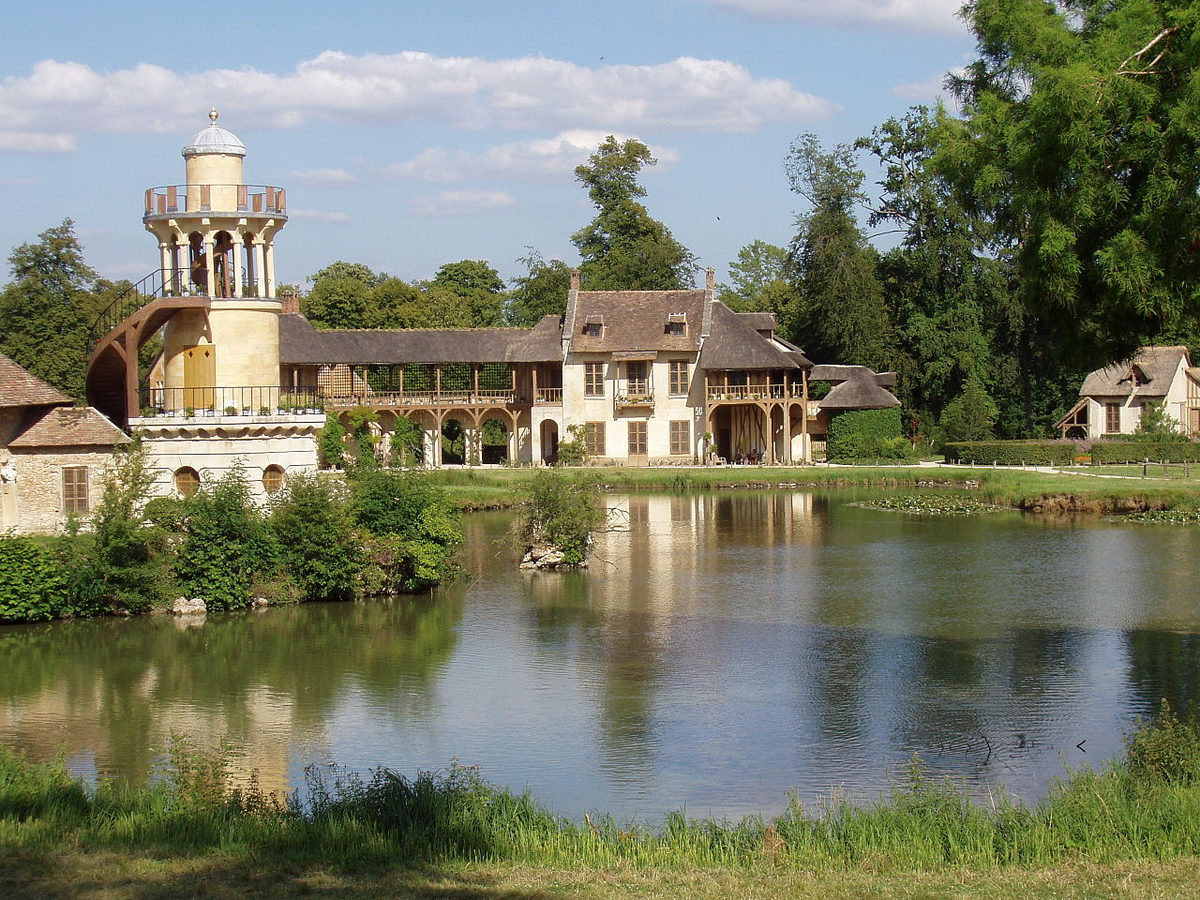Right now, a lot of folks are talking about cottagecore, an aesthetic category romanticising the rural idyll.
This is (almost literally) our field of expertise.
So, this morning, let& #39;s chat cottagecore and, specifically, a cottagecore icon: uh, Marie Antoinette.
[a thread]
This is (almost literally) our field of expertise.
So, this morning, let& #39;s chat cottagecore and, specifically, a cottagecore icon: uh, Marie Antoinette.
[a thread]
(painting by Marie Louise Elisabeth Vigée-Lebrun, from the collection of the Kunsthistorisches Museum, @KhmWien, accession nr Gemäldegalerie, 2772)
Marie Antoinette was the final Queen of France prior to the French Revolution.
Among other things, she is most well-known for saying something that she probably didn& #39;t say.
Even in the 1790s, the cake was probably a lie.
Among other things, she is most well-known for saying something that she probably didn& #39;t say.
Even in the 1790s, the cake was probably a lie.
The Queen didn& #39;t lead a long life. Guillotined at 37, many of the charges pitted against her historically are overblown. And it& #39;s a shame, because one of her greatest crimes is often overlooked: her pivotal role in the formation of cottagecore.
Marie Antoinette and King Louis XVI held court at the Palace of Versailles.
Antoinette struggled to adapt to life in the court, playing a part in a series of unfortunate events that even Count Olaf would be proud.
And just like Olaf, Antoinette liked dressing up.
Antoinette struggled to adapt to life in the court, playing a part in a series of unfortunate events that even Count Olaf would be proud.
And just like Olaf, Antoinette liked dressing up.
Whilst Marie Antoinette is well known for her conspicuous spending & lavish attire, a large part of her costume budget went in a direction that may seem a little paradoxical.
You see, Marie Antoinette liked dressing up as a milkmaid and a shepherdhess.
You see, Marie Antoinette liked dressing up as a milkmaid and a shepherdhess.
In fact, the Queen liked it so much that she commissioned her favourite architect (Richard Mique) and the painter Hubert Robert to build an entire model village/farm, in the style of a Norman hamlet, in Versailles& #39; gardens.
And so we arrive at Hameau de la Reine.
And so we arrive at Hameau de la Reine.
(photograph credit Daderot - http://en.wikipedia.org/wiki/Image:Marie_Antoinette_amusement_at_Versailles.JPG,">https://en.wikipedia.org/wiki/Imag... CC BY-SA 3.0, https://commons.wikimedia.org/w/index.php?curid=710462)">https://commons.wikimedia.org/w/index.p...
For the Queen, the hamlet was a way of manifesting Nature.
There were meadows, lakes and streams; a dovecote, a dairy, cottages (of course), and barns; and vineyards, fields, orchards and vegetable gardens.
And all were worked by real farmers, servants, milkmaids and herdsmen.
There were meadows, lakes and streams; a dovecote, a dairy, cottages (of course), and barns; and vineyards, fields, orchards and vegetable gardens.
And all were worked by real farmers, servants, milkmaids and herdsmen.
Often, Antoinette would host social events at the village, frolicking around with her maids in the guise of peasants and sometimes milking the cows and tending to the sheep. She would even serve meals for the royal househould, boasting of the freshness of her produce.
Here, we are reminded of [squints at notes] The Sopranos (of course), when Tony asserts to Christopher the value of fresh produce. ">https://youtu.be/wNG_uJhCb...
This is a good time to bring in The Sopranos, because just like the Sopranos& #39; household, Marie Antoinette& #39;s rural idyll is disfunctional.
And like Tony& #39;s obsession with his heritage, the Queen& #39;s farm is rooted in nostalgia for an experience that deeply contrasts to reality.
And like Tony& #39;s obsession with his heritage, the Queen& #39;s farm is rooted in nostalgia for an experience that deeply contrasts to reality.
The life of rural, farming communities has always been tough, revolving around adapting against difficult conditions (from financial hardship, to weather, to loneliness) to make ends meet.
This pastoral nostalgia for a simple life is simply not reflective of lived experience.
This pastoral nostalgia for a simple life is simply not reflective of lived experience.
Rural cottages were also a far cry from the way in which Marie Antoinette& #39;s expansive royal cottage in the hamlet was presented!
We focus on this contrast in our & #39;Making Rural England& #39; gallery! https://merl.reading.ac.uk/visit-us/galleries/making-rural-england/">https://merl.reading.ac.uk/visit-us/...
We focus on this contrast in our & #39;Making Rural England& #39; gallery! https://merl.reading.ac.uk/visit-us/galleries/making-rural-england/">https://merl.reading.ac.uk/visit-us/...
(obviously this isn& #39;t Making Rural France but like Marie Antoinette, let& #39;s just pretend it is)

 Read on Twitter
Read on Twitter![Right now, a lot of folks are talking about cottagecore, an aesthetic category romanticising the rural idyll.This is (almost literally) our field of expertise.So, this morning, let& #39;s chat cottagecore and, specifically, a cottagecore icon: uh, Marie Antoinette. [a thread] Right now, a lot of folks are talking about cottagecore, an aesthetic category romanticising the rural idyll.This is (almost literally) our field of expertise.So, this morning, let& #39;s chat cottagecore and, specifically, a cottagecore icon: uh, Marie Antoinette. [a thread]](https://pbs.twimg.com/media/EekLVfpXoAAtgfS.jpg)



